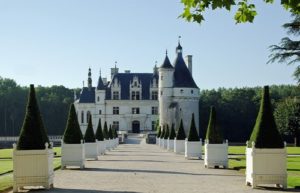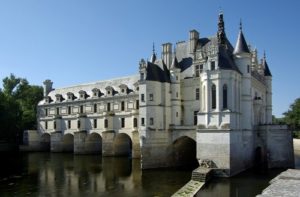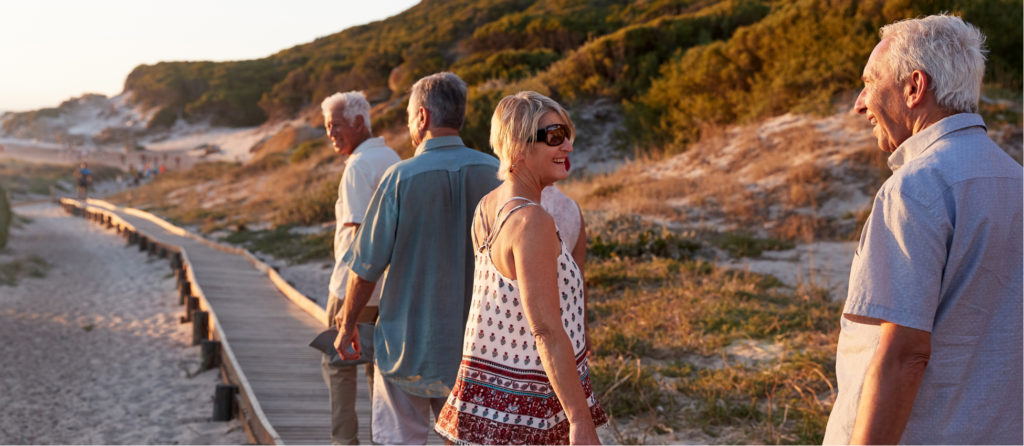Chenonceau is a beautiful fairytale château built across the River Cher. Apart from a glimpse of the old keep as you cross the bridge across the river into the village, the château cannot be seen without paying the entrance fee.
Knowing it gets very busy we planned to be there for opening time. It has a big car park and we were the first to arrive. We battled with the automatic ticket machine which insisted on charging and and delivering three tickets. Fortunately we managed to sell the extra one. We didn’t stop to hire an audio guide so were first through the gateway, where we were given an excellent free guide book. We hot footed it down the long tree lined drive to the château. We saved pictures of the outside for later and were first in the château and had the first two rooms and long gallery to ourselves. It wasn’t as busy as we feared. Most people move through quickly so we managed to get photos minus people without too many problems, as long as we were patient.
This review has turned out a lot longer than intended, so I have decided to break it up into two parts to make it more manageable. This is part 1 covering the history. Part 2 is a description of the château
The château is built on the site of an earlier building. This was demolished, except for the keep, in the early 16thC by Thomas Bohier, Treasury Superintendant under Francois I who began the present building on the site of the old mill. The remains of this can still be seen under the kitchens. His coat of arms and initials can be found all over the château. The old keep, the Marquis tower, is the first building you see as you approach the château and is surrounded by a moat.
Chenonceau is often referred to as the ‘Ladies château’. Henri II gave it to his Mistress Diane de Poitier in 1547 when he came to the throne. She built the bridge over the river and created the gardens. On Henri’s death, his widow, Catherine de Medici evicted Diane and banished her to Chaumont. Catherine built the long gallery over the bridge, designed the grand park and her garden. She had plans for another building at the far side of the gallery.
?Catherine left Chenonceau to her daughter in law, Louise de Lorraine, wife of Henri III. After his assassination, she retired to the château in deep mourning. On her death the château passed to her niece, Françoise de Lorraine who was married to César de Vendôme, illegitimate son of Henri IV by Gabrielle d’Estrée.
In 1733, it was the property of Dupin, the farm manager and local tax collector. It survived the revolution as Louise Dupin was well respected by the local population and also because of its strategic position at a crossing of the river Cher. The chapel was used as a wood store so camouflaging its religious character.
The château was sold and restored by Marguerite Pelouze after the Revolution and was later bought by the Menier family and they still own it. During World War One it was used as a hospital. The gallery played an important part in World War Two. The border between Occupied and Free France was the river Cher. The main entry of the castle was under German control, the door at the end of the gallery lead into free France and was used by the Resistance. ??
There are some steps into the château and stairs to the basement and the upper rooms.









